When I decided to buy my first metal detector, I found myself overwhelmed by the myriad of choices and technical jargon. Just yesterday, I was dreaming about the exciting possibilities of metal detecting, but now I was faced with terms like frequencies, VLF (Very Low Frequency), discrimination, DD coils, and VDI (Visual Display Indicator).
At first, I felt lost in this sea of information. Although I read numerous forums and watched countless videos, I struggled to grasp the significance of these concepts. While some resources provided basic insights, they didn’t quite clarify my confusion.
It wasn’t until I consulted an experienced metal detector seller that everything started to come together. They patiently explained the features and benefits of different models, guiding me toward a detector that suited my needs. Thanks to their expertise, I finally felt confident in my choice and excited to embark on my metal detecting adventure.
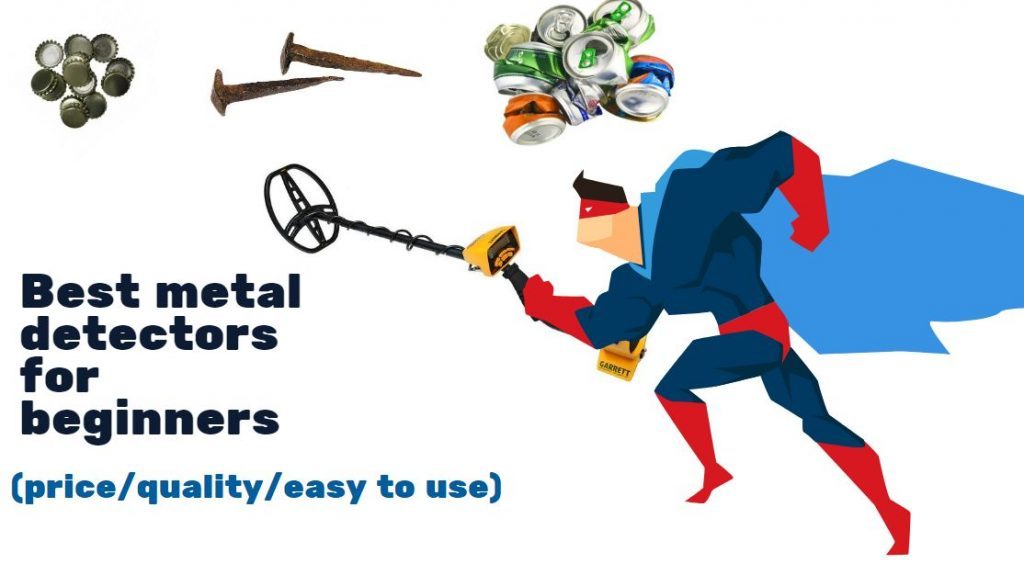
Now that I’ve tested several metal detectors, I’m excited to share my experiences with you.
By the end of this article, you won’t need to spend hours surfing the Internet or posting the same questions on forums. Just read through to the end, and you’ll have a solid understanding of what type of device is best for your needs.
If you discover that this hobby truly is your cup of tea, you might eventually sell your first detector to upgrade to a more advanced model. If not, you can easily resell it.
Over the past year, I’ve had the opportunity to borrow and use several metal detectors from friends, allowing me to recommend devices that are worth your attention.
Let’s remember the core idea of treasure hunting: it’s not the metal detector that finds treasures; it’s you. The detector is merely a tool that signals where a target might be located, but the decision to dig or not lies entirely with you.
Remember, the more you dig, the more you’ll find!
Contents
What is the best metal detector for beginners?
When it comes to beginner-level metal detectors, it’s essential to understand that “beginner” doesn’t necessarily refer to detection depth or the number of finds. Instead, these models come with a standard set of features designed to ease the learning process. Typically, they include a discriminator with preset and customizable masks, a pinpointer, and an average-sized coil.
Most settings on beginner detectors are automated, making it easier for newcomers to start metal detecting. However, this can also limit the user’s ability to set personalized search parameters.
Starting with a beginner metal detector is advisable because it allows you to begin treasure hunting immediately without needing to thoroughly study the device manual or deeply understand its inner workings.
A good beginner metal detector is one you can turn on and use right away. The models I recommend in my ratings are based on my personal experiences and insights, so keep this in mind when considering your options.
While many models may share similar features with the best detectors, some worthwhile options may not appear on my list.
Bounty Hunter TK4 Tracker IV
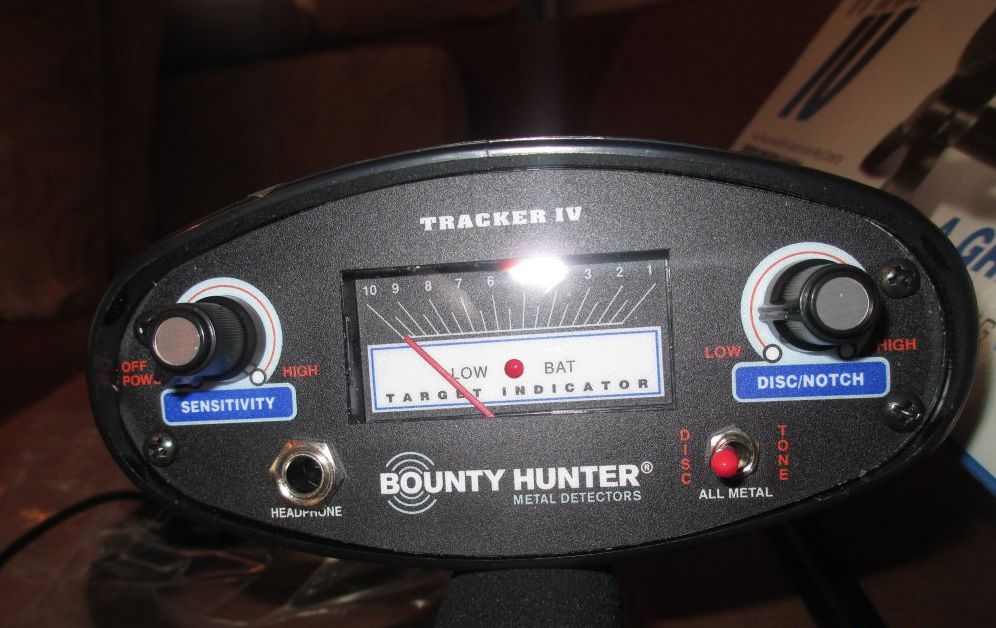
Pros
- Very affordable
- Very simple (3 operation modes, several settings)
- Light weight (2,98 lbs;1,35 kg)
Cons
- Automatic ground balance (one for all types of soil)
- Minimal number of settings
- No VDI
The Bounty Hunter TK4 Tracker IV is a popular choice for beginners looking for an affordable yet reliable metal detector. Despite initial skepticism about its capabilities, this device has proven itself to be a solid performer in the field, garnering a loyal following among newcomers to metal detecting.
Key Features
- Beginner-Friendly Design:
The TK4 Tracker IV is designed with ease of use in mind. It offers three operational modes:- Discrimination Mode: Helps differentiate between valuable metals and unwanted junk.
- Tone Discrimination: Provides auditory feedback based on the type of metal detected.
- All-Metal Mode: Detects all metals, making it useful for comprehensive searches.
- Automatic Ground Balance:
A standout feature of the TK4 is its automatic ground balance, which allows it to perform effectively in highly mineralized soils. This adaptability enhances its performance in various terrains, including beaches, thanks to its water-resistant 8-inch concentric coil. - Lightweight and Portable:
Weighing in at a lightweight design, the Tracker IV is easy to handle during extended treasure-hunting sessions. It won’t cause fatigue, allowing you to search for longer periods comfortably. - Long Battery Life:
The device operates on two batteries, providing up to 35 hours of continuous use on a full charge. This extended battery life ensures that you can explore without the worry of frequent recharging. - Headphone Compatibility:
It includes a ¼-inch plug connection for headphones, allowing for a more immersive experience while searching.
The Bounty Hunter TK4 Tracker IV is an excellent entry-level metal detector that offers great value for its price. While it may not have all the advanced features found in higher-end models, it is capable of detecting valuable items effectively, making it a worthwhile investment for beginners. For those with a slightly larger budget, more advanced models may offer additional features, but the TK4 Tracker IV remains a fantastic starting point for new treasure hunters eager to explore their surroundings.
- All-Terrain Treasure Detection: Hunt for coins, gold, and relics…
- 3 Smart Detection Modes: Easily switch between all-metal, tone, and…
- Easy to Use for All Ages: With intuitive analog controls and adjustable…
- Waterproof 8-Inch Search Coil: Explore shallow water, damp soil, and sandy…
- The Ultimate Treasure Hunter Gift: Give the gift of adventure! This…
- ADVANCED METAL DETECTOR: ANWIEL professional adults metal detector allow you to…
- LARGE LCD DISPLAY WITH BACKLIT: The wider and larger LCD display can show the…
- IP68 WATERPROOF SEARCH COIL: 10″ waterproof search circle can increase the…
- ADJUSTABLE & SUITABLE FOR ERGONOMICS DESIGN: Upgrade the second -generation rod,…
- FULL ACCESSORIES & PERFECT GIFT: Not only you can get 1×Metal Detector but also…
Last update on 2025-08-11 / Affiliate links / Images from Amazon Product Advertising API / Source: Amazon Affiliates
| Model | Bounty Hunter Tracker IV |
| Weight | 2,98 lbs (1,35 kg) |
| Batteries | 9v (2) |
| Headphones | No |
| Warranty | 5 year |
| Operating Principle | VLF |
| Standard Searchcoil | 8” weather resistant coil |
| Operating Frequencies (kHz) | 6.6 |
| Water resistance | Waterproof coil |
| Submersion Depth | No |
| Discrimination | 2 discrimination levels |
| Ground Balance | Preset |
| Search Modes | 3 |
| Audio Threshold | No |
| Sensitivity/Depth Adjustments | No |
| Electronic Pinpointing | No |
| VDI (0 to 99 scale) | No |
| Build-in flashlight | No |
Minelab Vanquish
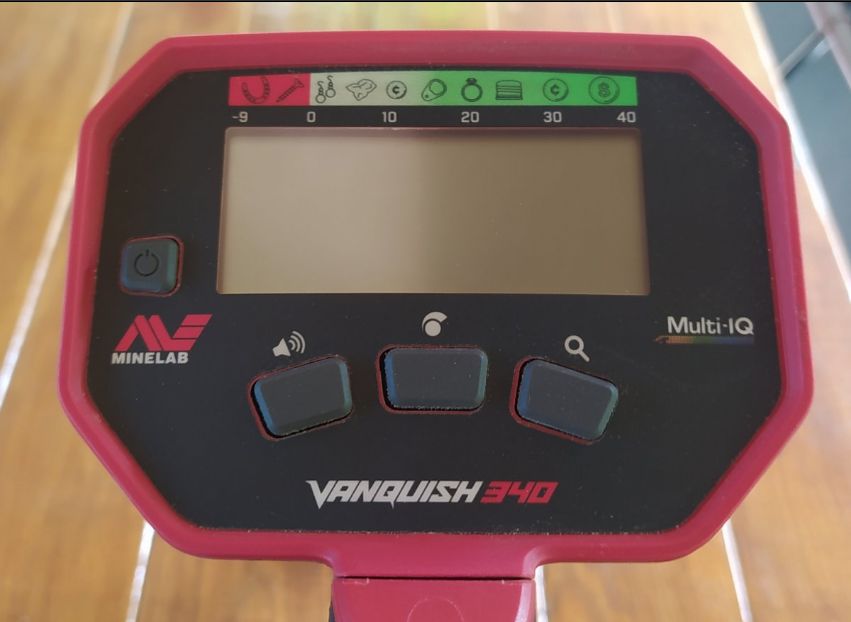
Pros
- Made by Minelab
- Multi-IQ technology
- Turn and go
- Four models (for every skill and budget)
Cons
- Ground search metal detector, only its search coil is waterproof
The Minelab Vanquish series, introduced in 2020, represents a significant advancement in the world of metal detectors. This review provides detailed insights into the technology behind the Vanquish models, their unique features, and the differences among them.
Why Consider the Vanquish Product Line?
- Innovative Technology: The Vanquish series is the first in the world to incorporate Multi-IQ technology within the budget and mid-range price brackets. This advanced multi-frequency technology allows for stable signal detection on various terrains, including challenging soils and sandy beaches. By simultaneously detecting targets through multiple frequencies, the Vanquish ensures optimal performance in diverse conditions.
- User-Friendly Design: These metal detectors are designed for ease of use. With a simple “turn on and go” operation, they are perfect for beginners who may not have extensive experience in metal detecting. Their compact and lightweight design enhances convenience during treasure hunting sessions.
- Variety of Models: The Vanquish product line includes four different models, ranging from the entry-level option to the Pro version, which features two search coils. This variety allows users to select a model that best suits their experience level and budget.
- Reputable Manufacturer: Minelab is a well-respected company known for its commitment to quality. They provide technical support, warranty coverage, and assurance of high product standards, adding to the confidence in purchasing a Vanquish detector.
In summary, if you are a beginner detectorist, I highly recommend exploring the Minelab Vanquish product line. The combination of quality and affordability makes these models appealing. However, it’s advisable to avoid the most basic model, as its functionality may not justify its price compared to higher options within the range.
- SIMULTANEOUS MULTI-FREQUENCY. The Vanquish 340 combines the power of multiple…
- TURN ON & GO. No need to choose frequencies or ground balance. This metal…
- 3 SEARCH MODES. Easily select from Park for high-trash recreation areas, Field…
- LIGHTWEIGHT & COLLAPSIBLE. The Vanquish 340 weighs only 2.6 lbs (1.2 kg) and…
- AUDIO CONTROL. Automatic noise canceling, lag-free audio response and 3-volume…
- SIMULTANEOUS MULTI-FREQUENCY. The Vanquish 440 combines the power of multiple…
- TURN ON & GO. No need to choose frequencies or ground balance. This metal…
- 4 MODES. Select from Park for high-trash areas, Field for coins and artifacts or…
- LIGHTWEIGHT & COLLAPSIBLE. The Vanquish 440 weighs only 2.6 lbs (1.2 kg) and…
- AUDIO CONTROL. Automatic noise canceling, lag-free audio response and 10-volume…
Last update on 2025-08-10 / Affiliate links / Images from Amazon Product Advertising API / Source: Amazon Affiliates
| Model | Minelab Vanquish 540 |
| Weight | 2.9lbs (1.3kg) |
| Length (Adjustable) | 760 mm (30″) – 1450 mm (57″) |
| Batteries | Included, 4 x AA NiMH rechargeable |
| Headphones | Wired 3.5 mm (1/8″) |
| Warranty | 3 years |
| Operating Principle | VLF |
| Standard Searchcoil | V12 12″x9″ Double-D |
| Operating Frequencies (kHz) | Multi-IQ |
| Water resistance | Coil to 1m/3-feet |
| Submersion Depth | No |
| Search Modes | Coin, Relic, Jewellery, Custom, All Metal |
| Ground Balance | Auto |
| Audio Threshold | No |
| Sensitivity | 10 levels |
| Electronic Pinpointing | Yes |
| VDI (0 to 99 scale) | Yes |
| Build-in flashlight | Monochrome LCD with red backlight |
Nokta Makro Simplex
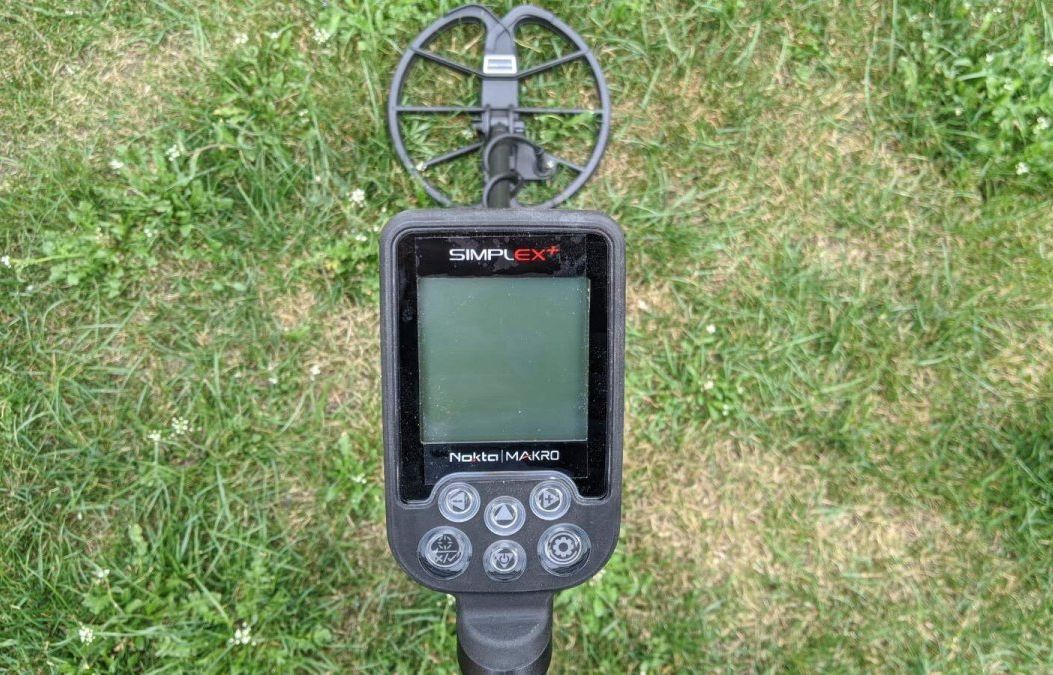
Pros
- Affordable
- Easy-to-use
- 2300 mAh battery accumulator
- Wireless headphones
- Waterproof up to 10 feet (3 meters)
Cons
- Noisy (especially on the beach with black sand)
The Nokta Simplex is a noteworthy metal detector launched in 2020, and it serves as a compelling alternative to the Minelab Vanquish product line. Though Nokta is a relatively new player in the metal detecting market, it has quickly established a reputation for creating devices that rival the industry’s best, often offering superior functionality.
Key Features
- Enhanced Detection Capabilities: Equipped with an 11-inch search coil, the detector offers excellent sensitivity and response across different soil types. Its frequency shift function further enhances detection capabilities, ensuring optimal performance even in challenging conditions.
- Long Battery Life: The device is powered by a 2300 mAh rechargeable battery, allowing for extended use without the need for extra batteries. This feature is particularly beneficial for long treasure-hunting sessions.
- Wireless Connectivity: The Simplex includes a unit for connecting wireless headsets, providing convenience and freedom of movement while detecting.
- Waterproof Design: One of the standout features of this model is its waterproof shell, which allows for submersion up to 10 feet (3 meters). This capability makes it ideal for underwater treasure hunting as well as beach searching.
- Vibration Feature: The handle vibrates upon detecting a target, allowing users to hunt underwater without needing to rely on the display or headphones. This feature is particularly useful in noisy environments or while submerged.
In summary, if you enjoy beach hunting, the Nokta Simplex is an excellent option. While it may not be perfect, it significantly outperforms many beginner metal detectors in beach conditions, especially on challenging terrains like black sand. Given its price point, you’re unlikely to find a better detector that offers such a range of features tailored for both land and underwater use. Nokta is shaking up the market, and even established brands like Minelab are taking notice. If you’re serious about treasure hunting, the Simplex deserves your consideration.
- WATERPROOF metal detectors for adults: The Nokta Simplex Ultra boasts all new…
- FULLY CARBON FIBER: Simplex Ultra is a solid product with its carbon fiber…
- ONLINE FIRMWARE UPDATES: Stay up-to-date with firmware updates (via USB on PC)…
- Lightweight (2.6 Ibs / 1.2 kg): Well balanced – Enjoy detecting for extended…
- Handheld Metal Detector with Vivid COLOR LCD Screen: The high-resolution color…
- Ideal for kids: Midi Hoard Waterproof Kids Detector is making it the most fun…
- High Accuracy: Equipped with a 7-inch (18 cm) search coil, Midi Hoard Metal…
- Impressive build quality combined with child friendly design: Designed with all…
- Waterproof Metal Detector: Nokta Midi Hoard Metal Detector has been designed…
- Lightweight & Easy to Use: Only weighs 1.9 lbs (880 gr) making it very easy to…
Last update on 2025-08-10 / Affiliate links / Images from Amazon Product Advertising API / Source: Amazon Affiliates
| Model | Nokta Simplex |
| Weight | 2.9 lbs (1.3 kg) |
| Length (Adjustable) | 25″ – 52″ (63 cm – 132 cm) |
| Batteries | 2300 mAh Lithium Polymer |
| Headphones | Wireless |
| Warranty | 2 Years |
| Operating Principle | VLF |
| Standard Searchcoil | 11″ (28 cm) DD Waterproof |
| Operating Frequencies (kHz) | 12 |
| Water resistance | up to 10 feet (3 meters) |
| Search Modes | 4 (All Metal / Field / Park /Beach) |
| Ground Balance | Auto, manual |
| Frequency Shift | Yes |
| Sensitivity | 6 Levels |
| Electronic Pinpointing | Yes |
| VDI (0 to 99 scale) | Yes |
| Build-in flashlight | Yes |
Garrett ACE APEX
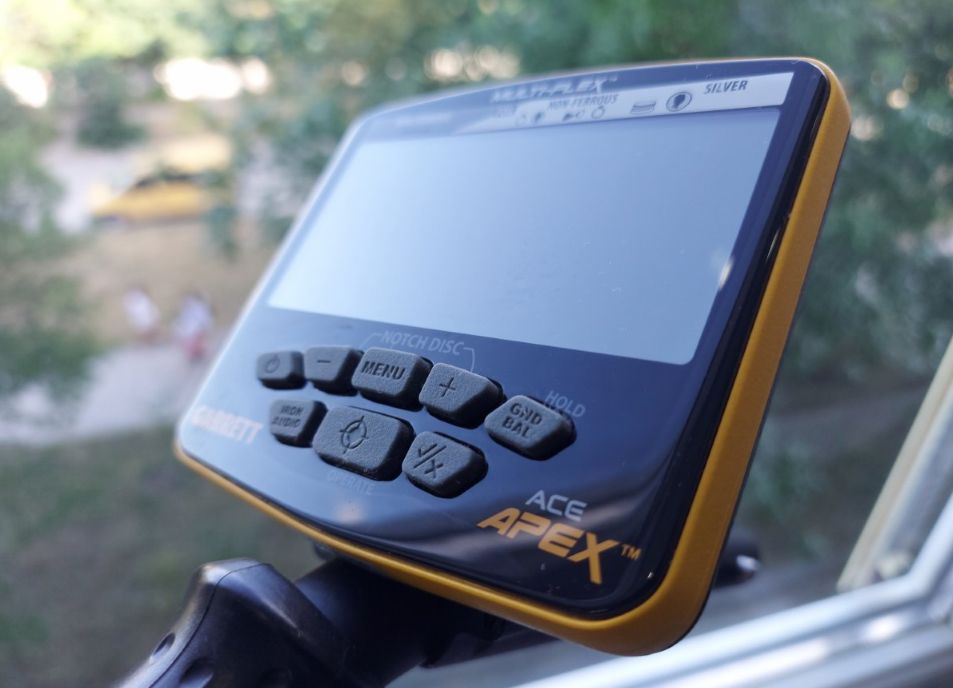
Pros
- Famous american brand
- 4 frequencies – 5, 10, 15, 20 kHz
- Really large LCD
- Wireless headphones
Cons
- Rainproof control box
The Garrett Ace Apex stands out as the first and only metal detector from Garrett that features a true multi-frequency operation mode. This innovative capability allows users to operate on four frequencies simultaneously – 5, 10, 15, and 20 kHz. Additionally, the device can also be configured to run on a single frequency, which helps minimize electromagnetic noise interference.
Key Features
- Multi-Frequency Operation:
The Ace Apex’s ability to operate on multiple frequencies at once enhances its versatility and effectiveness in various detecting environments. This feature is especially useful for adapting to different soil conditions and target types. - Large LCD Display:
The detector is equipped with a large LCD screen that presents information clearly, including target depth, discrimination settings, and the VDI (Visual Discrimination Index) number prominently in the center. - Battery Life and Convenience:
The device uses a Li-ion battery, providing up to 15 hours of continuous operation. This extended battery life ensures you can enjoy long detecting sessions without the hassle of frequent recharging. - User-Friendly Design:
Despite its advanced features, the Ace Apex maintains a beginner-friendly approach, making it accessible for new users. It includes both automatic and manual ground balance functions, allowing for easy adjustments based on specific detecting conditions. - Enhanced Discrimination and Connectivity:
The improved discrimination capabilities help differentiate between various types of metal targets, increasing your chances of finding valuable items. The Ace Apex also supports wireless headset connectivity, offering greater freedom of movement while detecting. - Ergonomic Features:
The device includes collet fixtures on the shaft, which enhance the overall stability and ease of use during extended detecting sessions. Additionally, the backlighting feature makes it suitable for use in low-light conditions.
The Garrett Ace Apex combines advanced technology with user-friendly features, making it an excellent choice for both novice and experienced metal detectorists. Its multi-frequency operation, robust battery life, and comprehensive set of features ensure that you are well-equipped for any treasure-hunting adventure. Whether you are searching on land or at the beach, the Ace Apex is designed to deliver reliable performance and help you uncover hidden treasures with ease.
- MULTI-FLEX TECHNOLOGY: Choose from 5 kHz, 10 kHz, 15 kHz, 20 kHz,…
- IRON VOLUME CONTROL: Adjust iron target volume independently while keeping…
- Z-LYNK WIRELESS TECHNOLOGY: 6X faster than Bluetooth for real-time, cable-free…
- VIPER SEARCHCOIL: 6″ x 11″ DD coil provides broad coverage and excellent target…
- RECHARGEABLE & LIGHTWEIGHT: Built-in lithium-ion battery lasts up to 15 hours;…
Last update on 2025-08-11 / Affiliate links / Images from Amazon Product Advertising API / Source: Amazon Affiliates
| Model | Garrett ACE Apex |
| Weight | 2.5 lbs (1.13 kg) |
| Length (Adjustable) | 43″ to 56″ (1.09 m – 1.4 m) |
| Standard Searchcoil | 6″ x 11″ DD Viper™ or 8.5” x 11” DD Raider™ |
| Batteries | Rechargeable Lithium Ion, built-in; 7.5Wh, 30 g |
| Headphones | Yes, Z-Lynk Wireless Technology |
| Warranty | 2 years |
| Operating Principle | VLF |
| Single Frequency Options | 5, 10, 15 and 20 kHz |
| Multi-Frequency Options | Simultaneous Multi-Frequency and Multi-Frequency Salt |
| Standard Searchcoil | 6″ x 11″ DD Viper |
| Water resistance | Rainproof control box |
| Submersion Depth | No |
| Discrimination | Yes, 20 selectable segments |
| Iron Discrimination Segments | 8 |
| Search Modes | 6, with International and US Coins modes |
| Updatable Software | Yes |
| Large Digital Target ID | 0 to 99 scale |
| Ground Balance | Auto, 175 pts |
| Audio Threshold | No |
| Sensitivity – Depth Adjustments | 8 |
| Electronic Pinpointing | Yes |
| VDI (0 to 99 scale) | Yes |
| Build-in flashlight | Yes |
Nokta Makro The Legend
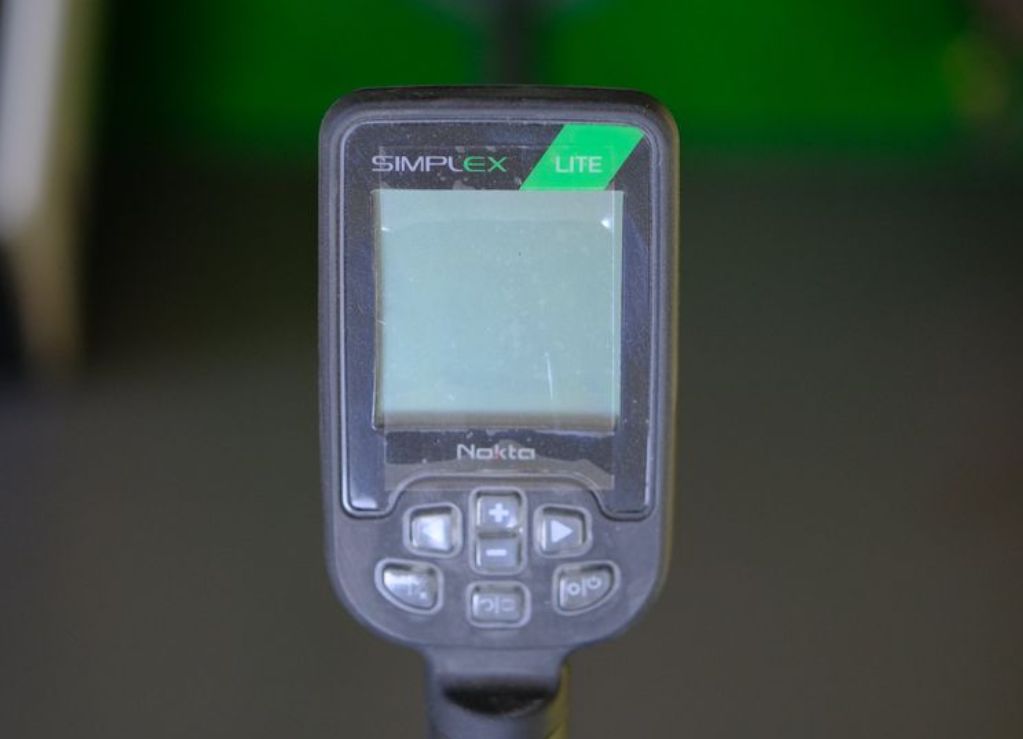
Pros
- Manufactured in 2022
- Multifrequency (4 kHz, 10 kHz, 15 kHz, 20 kHz, 40 kHz)
- 4 search modes (Park; Field; Beach; Gold Field)
- Wireless headphones
- Two packs (with different coils and accessories)
Cons
- No idea really
The Nokta Makro The Legend is a modern metal detector launched in 2022 that caters to a wide range of searching needs, including underwater treasure hunting up to 3 meters deep. Its user-friendly design makes it an excellent choice for beginners, with pre-set search modes that simplify the detecting process.
Key Features
- Versatile Search Modes:
The device offers various pre-set search modes, including Park, Field, Beach, and Goldfield. These modes are well-optimized for different environments and don’t require extensive knowledge of metal detecting basics, allowing newcomers to start searching for treasures right away. - Multi-Frequency Operation:
One of the standout features of The Legend is its ability to operate in multi-frequency mode, where multiple frequencies work simultaneously. This enhances the detector’s performance across various soil conditions and target types. The available frequencies include:- 5 kHz
- 10 kHz
- 15 kHz
- 20 kHz
- 40 kHz
- Multifrequency (3 modes)
- Wireless Headphones:
The device comes with Bluetooth-enabled wireless headphones included in the package, providing greater flexibility and comfort while searching. This feature allows for seamless audio feedback without the constraints of wired connections. - Waterproof Design:
Designed for underwater treasure hunting, The Legend is submersible up to 3 meters, making it ideal for beachcombing and exploring shallow waters.
The Nokta Makro The Legend is a versatile and beginner-friendly metal detector that combines advanced features with ease of use. Its range of search modes, multi-frequency capabilities, and included wireless headphones make it an excellent choice for those looking to start their treasure-hunting journey. Whether you’re searching in parks, fields, or underwater, The Legend is equipped to help you discover hidden treasures efficiently and effectively.
- Waterproof with IP68 rating: Fully submersible up to 10ft (3 meters) and…
- Multi-Frequency: Nokta’s first simultaneous multi frequency metal detector The…
- Gold Detector: The Legend is equipped with specifications that are suitable also…
- Long Battery Life: Easily charge it with a USB charger or powerbank. Provides up…
- Deep Detection Capability: Unlock the hidden treasures beneath the surface with…
- WATERPROOF with IP68 rating: Fully submersible up to 3 meters (10ft) and…
- MULTI-FREQUENCY: Nokta’s first simultaneous multi frequency metal detector The…
- The Legend Pro Pack & Accupoint & Starter Pack Package Contents: Search Coil 12″…
- Handheld Metal Detector with Vivid Color LCD Screen: The high-resolution color…
- Metal Detector with Accessories: Thanks to the Starter Accessory Package, you…
Last update on 2025-08-08 / Affiliate links / Images from Amazon Product Advertising API / Source: Amazon Affiliates
| Model | Nokta Makro The Legend |
| Operating Frequencies | Multi (3), 4 kHz, 10 kHz, 15 kHz, 20 kHz, 40 kHz |
| Audio Frequencies | 100 Hz – 1200 Hz Adjustable |
| Search Modes | 4 (Park / Field / Beach / Gold Field) |
| Custom User Profiles | 4 |
| Audio Tones | 60 |
| Tone Volume | Yes |
| Tone Break | Yes |
| Tone Frequency | Yes |
| Adjustable Threshold | Yes |
| Notch Filter | Yes |
| Ground Balance | Automatic / Manual / Tracking |
| Pinpoint | Yes |
| Frequency Shift | Yes |
| Noise Cancellation | Yes |
| Vibration | Yes |
| Sensitivity Setting | 30 Levels |
| Target ID | 01-60 |
| Search Coil | The Legend WHP: Waterproof DD Search Coil 28 cm / 11″ (LG28) The Legend PRO PACK: Waterproof DD Search Coil 28 cm / 11″ (LG28) Waterproof DD Search Coil 15 cm / 6″ (LG15) |
| Display | Custom LCD |
| Backlight | Yes |
| LED Flashlight | Yes |
| Weight | 1.4 kg (3.0 lbs.) Including The Search Coil |
| Length | 63 cm – 132 cm (25″ – 52″) Adjustable |
| Battery | 5050 mAh Lithium Polymer |
| Warranty | 3 Years |









